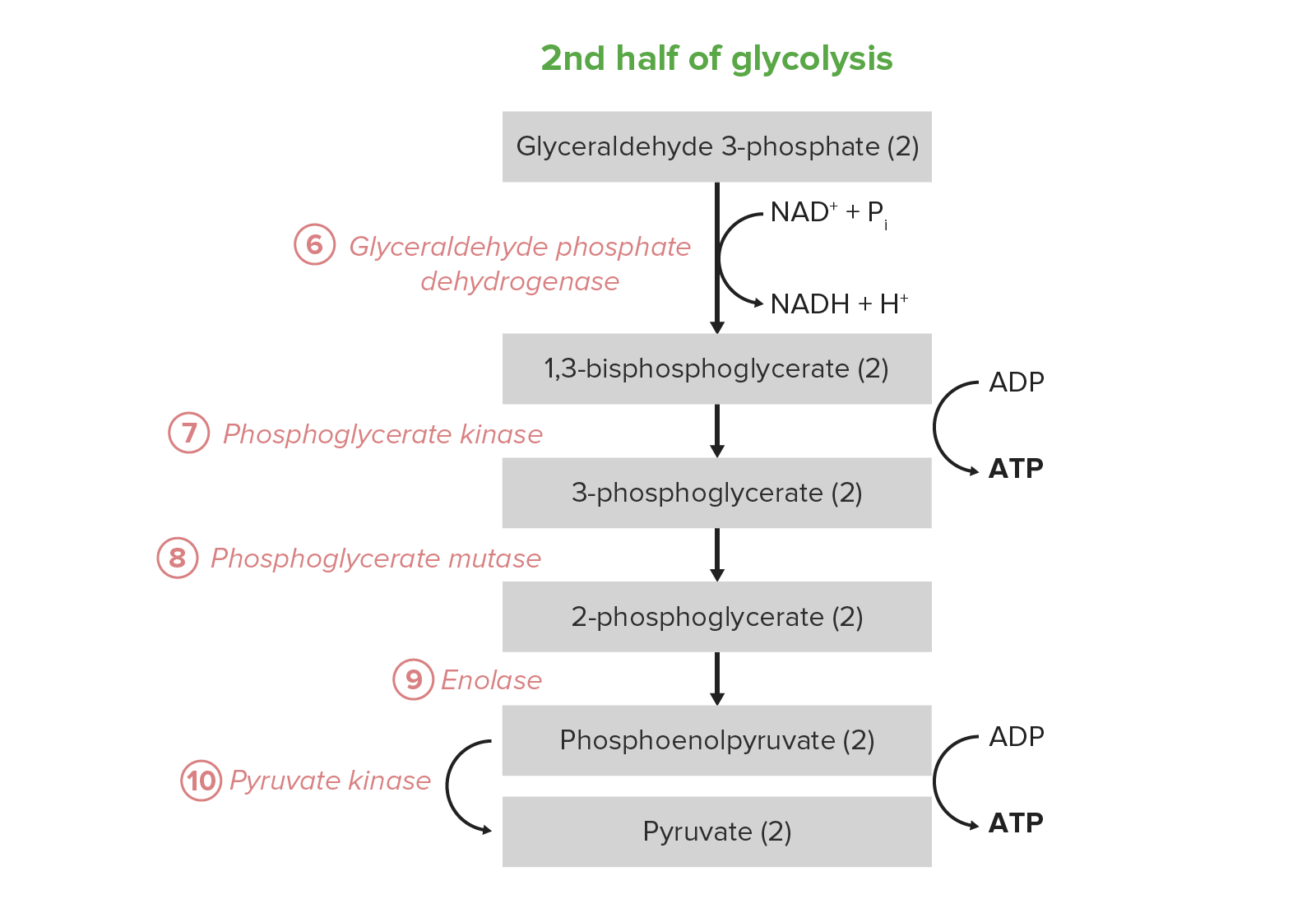Playlist
Show Playlist
Hide Playlist
Glycolysis: 1,3 BPG –> 3-PG – Glycolysis and Pyruvate Metabolism
-
04 Advanced CarbohydrateMetabolism.pdf
-
Reference List Biochemistry.pdf
-
Download Lecture Overview
00:00 The next reaction of the pathway is where we start to create ATPs. 00:06 In this reaction 1,3-bisphosphoglycerate is converted into a molecule called 3-phosphoglycerate, and this is a pretty straight forward reaction. 00:15 You see the phosphate on position 1 on the left being removed and transferred to ADP to make ATP by the enzyme phosphoglycerate kinase. 00:25 Now this reaction is interesting in the sense as what we call a substrate level phosphorylation. 00:33 A substrate level phosphorylation occurs when a high energy molecule transfers a phosphate onto ADP to make ATP which is exactly what you have seen here. 00:44 Now many people think mistakenly that this is the way most ATPs is made in the cell, by simply having a high energy molecule to transfer. 00:54 It doesn't occur that way. And in fact most of the ATP in cells is made by a process called oxidative phosphorylation. 01:01 This is an unusual reaction in a sense that ATP is made directly. 01:07 We will see another one of those later in glycolysis. 01:09 The delta G zero prime for this reaction is very energetically favorable, meaning -18.9 kJ/mol. It moves very strongly to the right and since we are making an ATP what that tells us is that there is a lot energy in 1,3-bisphophoglycerate in order to make this happen so efficiently.
About the Lecture
The lecture Glycolysis: 1,3 BPG –> 3-PG – Glycolysis and Pyruvate Metabolism by Kevin Ahern, PhD is from the course Carbohydrate Metabolism.
Included Quiz Questions
Which of the following is true of the conversion of 1,3-bisphosphoglycerate (1,3 BPG) to 3-phosphoglycerate?
- This reaction is called a substrate-level phosphorylation.
- This reaction is catalyzed by phosphoglycerate mutase.
- This reaction is the only oxidation reaction in glycolysis.
- This reaction is not very energetically favorable.
- This reaction is how most ATP is formed in the cell.
Customer reviews
5,0 of 5 stars
| 5 Stars |
|
5 |
| 4 Stars |
|
0 |
| 3 Stars |
|
0 |
| 2 Stars |
|
0 |
| 1 Star |
|
0 |




